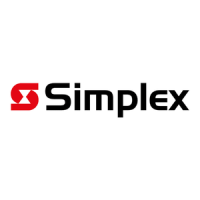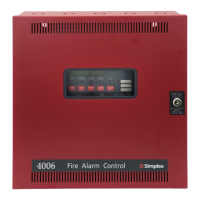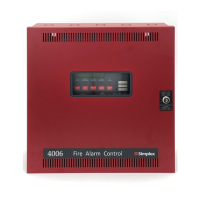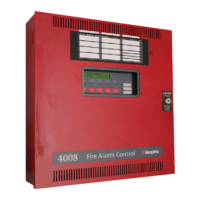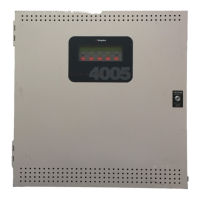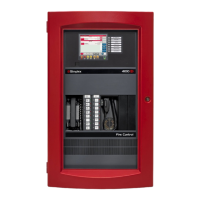10-2
Chapter 10 MNS/ECS Application
Application of 4100ES as a UL2572 Mass Notification System
General
Information
A 4100ES system with Basic Voice option 4100-9620 (analog) or 4100-9621 (digital) can be
configured for operation as a Mass Notification System (MNS). Configuration of the system is
to be done per UL2572, taking into account any special requirements resulting from a Risk
Analysis.
Hierarchy of
Operator
Interfaces
The 4100ES main user interface serves as the primary local control unit for the in-building
MNS, called the Autonomous Control Unit. It is an “authorized personnel” operator interface,
that can take control of the paging and messaging features of the 4100ES system.
The ACU serves as the primary control station in the MNS, and as such has the highest priority
among all operator interfaces attached to the 4100ES system, including network interfaces
such as a TrueSite Workstation. The hierarchy of operation is specified by UL2572 as:
• Autonomous Control Unit (ACU)
• Local Control Unit (LOC)
• Central Command Station (CCS)
A Local Control Unit (LOC) is an in-building operator interface for authorized personnel to
initiate messages and signaling in an emergency situation. An example of an LOC is a 4100
Remote Annunciator, configured with remote microphone and LED/Switch modules for
activation of the paging and emergency message features of the 4100ES.
A Central Command Station (CCS) is a networked user interface, such as TrueSite
Workstation. These units can activate signaling over a local in-building or campus network. A
CCS is provided with a microphone, which may be a remote microphone, such as 4003-9803
wired from a 4100ES fire alarm node in the system. Another possibility would be a 4100-1244
remote microphone in a transponder bay installed into a console at the CCS location.
Alternately, a 4100ES may be rack-mounted as part of the command console, and the master
microphone would be available for this function.
The hierarchy of the operator interfaces is programmed using Custom Control. For example,
the ACU could have a switch programmed to be a priority 3, an LOC switch could be
programmed as priority 4 and a CCS could have a switch programmed as priority 5. Refer to
the ES Panel Programmer’s Manual (574-849) for detailed information about programming
switch priority and writing custom control.
If transfer of control is required, LED/Switch points must be programmed to activate and to
indicate the transfer of control to each desired location. These switches would be programmed
at different priorities and the LEDs would indicate the status of control.
Refer to document 900-249, 4100 Upgrade Audio Enhancement Guide for details on how to
configure an audio system with multiple command centers.
When any unit is in control, an LED must indicate the active control at each location. If a
higher priority service takes control from a lesser priority service, that should be indicated by
extinguishing the LED or indicator for the lesser priority service and lighting the LED or
indicator for the greater priority service.
For example, if the LOC takes control, the CCS must be locked out from taking control and an
indicator at the CCS must show that the LOC is in control. If the ACU then takes control from
the LOC, the indication must change at both the LOC and CCS that the ACU now has control.
In this case, both the LOC and CCS must be locked from taking control.

